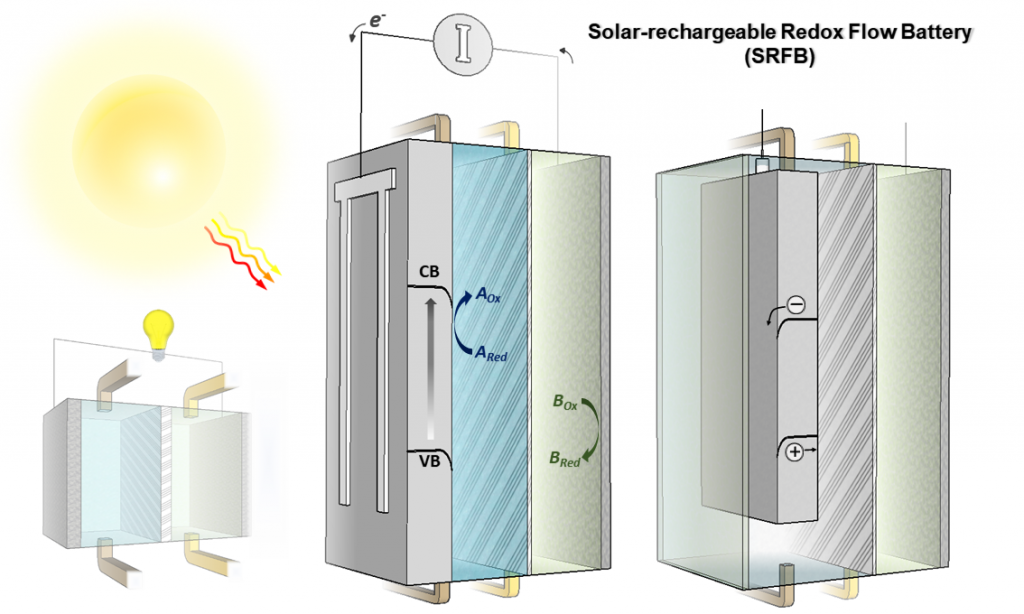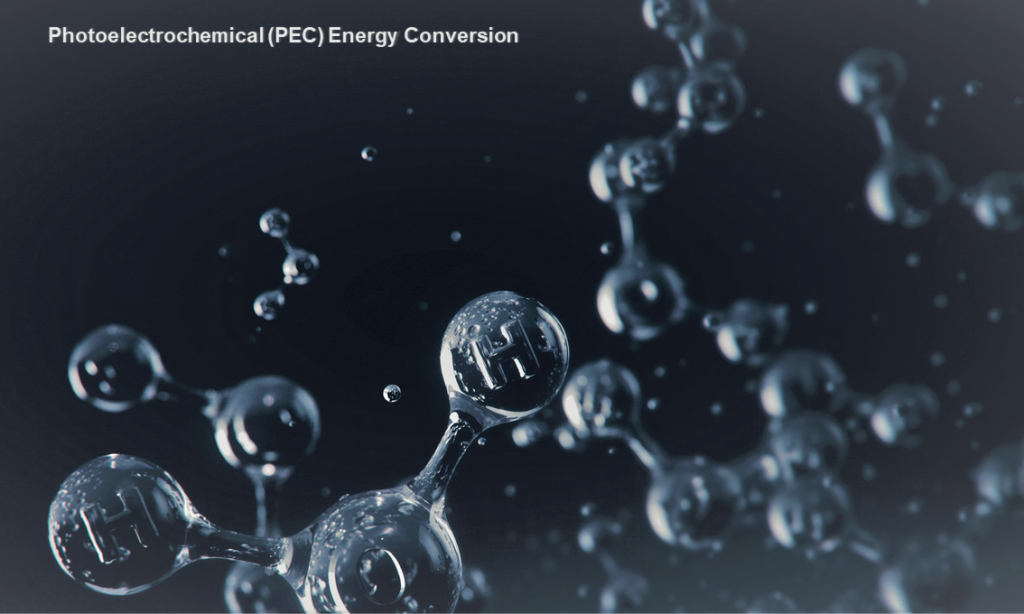
Solar-rechargeable Redox Flow Battery
Solar redox flow batteries (SRFBs) have received renewed attention in recent years. An SRFB is a combination of a redox flow battery (RFB) and a photoelectrochemical (PEC) cell, which may be fully integrated in a single cell or separated into an RFB and a PEC charging component. In this way, the SRFB is a rechargeable PEC cell, converting solar energy into a storable electrochemical fuel that later can be converted into electricity. Our research focus is on theoretical modelling of thermo- and photo-electrochemical behaviour under dynamic operating conditions and its experimental verification.

Thermally-regenerative Electrochemical Cycle (TREC)
Taking advantage of the temperature dependence of the redox couples, it is possible to store heat directly into electrical energy. An interesting feature of this thermally regenerative electrochemical cycle (TREC) applied redox flow battery is its function as a waste-heat harnessing as illustrated in the figure. This implies that temperature of the building (or device) can be regulated and utilised in the form of electricity. We aim to provide an innovative breakthrough for maximising the heat conversion efficiency of the RFB with TREC by introducing a high throughput screening of the redox chemicals.

Photo- and electro-chemical (PEC & EC) Energy Conversion
In the last decade there has been an enormous push to find a sustainable approach for the hydrogen production from the water. Photo- and electrochemical (PEC & EC) splitting of water into H2 (and O2) could become a key technology for making clean and sustainable fuels. This PEC approach is also easily applicable for above described redox flow battery charging purpose as well. We aim to design efficient and durable PEC and EC energy conversion devices that enable the feasible conversion of the solar energy into chemical, such as Power-to-X and etc.
